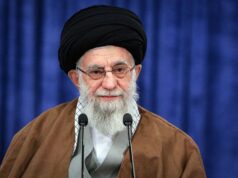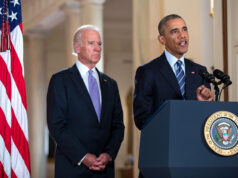A few years ago, a group of senior American military professionals were in discussion with high-level IDF commanders on what the Israelis called “extremely narrowly focused attacks.” In the beginning, they tiptoed around blunt language—”targeted killing” or “assassination”—but the bottom line emerged. Israel faced an enemy that was hiding among civilians who may have been human shields, held against their will, or may have been willingly giving aid and shelter. But in either case, the civilians were presumed to be innocent and, to the extent possible, off limits.
The question was whether technology could help eliminate the bad guy, free the rest of the people and allow for political progress. The Israel Air Force commander was proud of how small a hole he could make with a very large airplane.
How far we have come from the days of Allied bombing runs over Dresden or Tokyo. There is no issue to be taken with those, or with the American decision to use the atom bomb, given the limitations on technology and the need to save American lives while ending the war. But one can appreciate that the current environment makes it possible to eliminate an entrenched enemy with markedly fewer casualties.
Why is this important today?
Because a motorcycle rider placed a bomb on the car of Iranian scientist Mostafa Ahmadi-Roshan, identified by Iranian television as head of a department at the Natanz uranium enrichment facility in Isfahan. This is the fourth nuclear scientist killed in Iran since 2007 and comes after a series of explosions in factories/facilities that have a connection to Iran’s nuclear program.
Someone is taking proactive but narrow measures to ensure that the technological capacity to build nuclear weapons does not exist in Iran and to ensure that nuclear scientists who might be inclined to work for the regime think twice—or at least pay up their life insurance.
There is the usual gnashing of teeth by those who want to blame the Mossad or the CIA. Even without knowing who did it, the real questions are, “Would it be preferable for Israel or the U.S. to fly bombers to Iran and crater Isfahan and its civilian population?” They could and we could, but it wouldn’t be nice. “Would it be preferable for the West to starve Iran into submission through severe sanctions?” We could, but it wouldn’t be pretty. “Would it be better to allow Iran to have nuclear weapons capability? What would that mean to Israel, the West and the Sunni majority Middle East?”
Neither the U.S. nor Israel is perfect in eliminating collateral damage—and each “collateral” is a person who should not have died. Civilians have been killed in Pakistan and Gaza, and a pedestrian was killed in the explosion that killed Ahmadi-Roshan, so the job wasn’t quite targeted enough. Therein lies the difference between the good guy and the bad guys in the broadest sense—for the good guys, civilian casualties are the subject of regret; for the bad guys, they are the object of the exercise.
The world is better off with fewer Iranian nuclear scientists.





